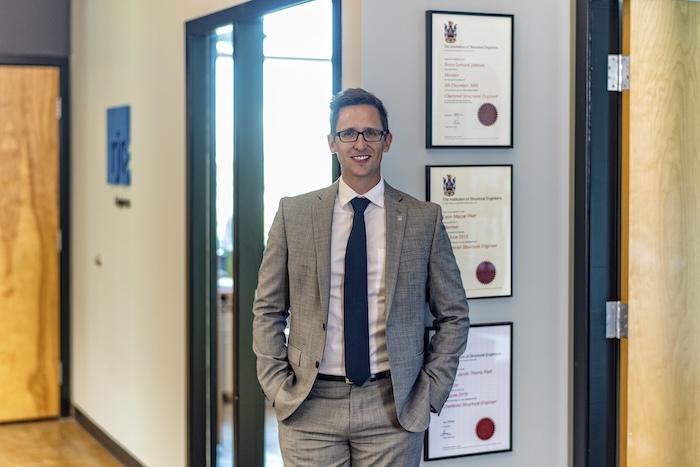
Conversation: Cost-efficient earthquake resistance
February 8, 2024
By
Peter Saunders
Leon Plett has been the managing principal of RJC Engineers’ structural engineering team in Victoria since 2015. Their provincial level of designation differs from elsewhere in the country, due to the complex engineering required to address the region’s risk of earthquakes. And as seismic codes continue to evolve to ensure new buildings are more resilient, engineers face the challenge of keeping costs reasonable, during a housing crisis.
Why are seismic codes changing?
As we gain more information about the geological record in this region, we find out there have been more frequent earthquakes over the course of history than previously thought, which increases their probability today. Newly discovered faults further increase risk. Modern building designs are based on these updated seismic hazards.
In addition to the Cascadia fault that runs all the way down the west coast, the more recently discovered Devil’s Mountain Leech River fault extends from southwestern Vancouver Island into the Strait of Georgia over to northwest Washington State. It runs right through the most populated areas of southern Vancouver Island, including Victoria.
Those hazards feed into the response spectrum, which measures the risk of ground shaking to buildings.
How does that affect your work?
It changes the magnitude of what we need to do for new buildings. We resist seismic forces primarily through the use of shear walls or bracing. These structural elements must become larger and more numerous to resist more force, which in turn requires a larger foundation, all of which increases the building’s structural cost.
In a residential tower with a concrete core for stairs and elevators, that core’s walls must now be 30% to 70% thicker, depending on site class (i.e. based on soil and other geological conditions). A 1-m thick wall in the old code could become a 1.5-m thick wall in the new code, which adds to the cost and reduces occupiable floor area. Such incremental costs have a significant impact during a housing crisis.

Eight storeys of affordable housing top the new Victoria Fire Station No. 1, which is designed to ensure immediate post-disaster occupancy. Photo courtesy RJC.
So, how can you make safety affordable?
As structural engineers, it is very important to try to guide the design process early on, to develop building forms that are naturally resilient and safer. Simplifying the built form can offset costs.
Also, a lighter building is safer in a quake. The forces on a building come from its own inertia—i.e. a heavy building wants to stay where it already is—versus ground movement. When we make a building lighter, we reduce the seismic forces on it, so it requires less bracing, saving costs.
In midrise woodframe, for example, rather than use a concrete topping for acoustics—which can account for half the weight of the structure—we try to address acoustics through sprung ceilings and resilient floormats.
A mass-timber tower is 30% lighter than a concrete tower, reducing the shear walls and foundation, which offsets the additional cost of the building material. We also have more sophisticated design software and technology today and contractors can use higher-strength concrete and steel to limit the costs of seismic safety measures.
In most cases, we design for anticipated loads in scenarios where people will escape with their lives, but there will be enough damage that the building will be not occupiable post-quake. We did recently work on a unique project, however, the new Victoria Fire Station No. 1, which due to its purpose was designed in accordance with the post-disaster occupancy requirements of the 2018 B.C. Building Code and the 2015 National Building Code of Canada (NBCC).
There are eight storeys of affordable social housing above the four-storey fire hall and two levels of underground parking. Those are the safest residential units in the city!
This article originally appeared in the January/February 2024 issue of Canadian Consulting Engineer.
